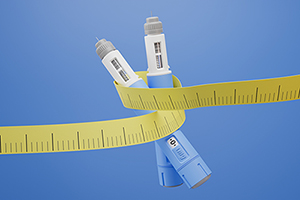



| By Dr. Ronald Hoffman
Many people experience an inadequate tear film or eye discomfort some time in their lives. In may be in an airplane, a dry, overheated room or a dusty workplace. But there may be more than 10 million Americans who have a significant dry eye condition that may be related to other symptoms.
The classic Sjogren’s-associated dry eye affects up to 2 percent of the population. The triad of symptoms includes: dry eye, dry mouth and arthritis. Dry eyes can be caused by medication, dehydration, inflammation of the eyelids and/or skin, previous eye surgery, systemic diseases such as rheumatoid arthritis, thyroid disease, lupus, sarcoidosis and even poor blinking habits (such as staring at a computer).
Tears are not just water. They have three separate components: 1.) Oil (from the Meibomian oil glands in the eyelids); 2.) Mucous (from the goblet cells deep inside the eyelid); 3.) watery tears (the “aqueous” tears from the lachrymal gland and accessory lachrymal glands located in the conjunctiva of the eyelids).
The innermost layer of tears in direct contact with the eye is the mucous layer, which also is called mucin. The mucin coats the surface of the cornea. The middle layer is the watery tears, which stick to the mucin and keep the eye moist. The outer tear layer is composed of oil from the Meibomian glands; it is deposited like an oil slick on the outside of the watery tears to slow their evaporation from the surface of the eye. Every time you blink you sweep the tears across the cornea and into the drainage ducts called puncta.
The tear film can be evaluated by the use of vital dyes, breakup time, measurement of tear production (Schirmer’s test) and even some very fancy measurements of thickness and chemical constitution of the tear film. However, your symptoms often will be your best guide.
The symptoms include irritation, burning, redness, mucous accumulations, itching and even light sensitivity. In fact when cells fall off the cornea, it can be downright painful. Having mild eye muscle problems or having inadequate reading glasses may make the symptoms worse. A routine eye examination will exclude other causes of irritation such as conjunctivitis, faulty glasses or contact lens trouble.
It is important to recognize that this low-grade, chronic irritation actually is a medical problem, so you should begin getting help.
Therapy is directed at supplying wetting drops, reducing inflammation, improving your environment and evaluating your drugs and diet.
1. Use artificial tears: These may be non-preserved (sometimes expensive and inconvenient), minimally preserved or fully preserved. See the Dry Eye chapter in “The Eye Care Revolution” for more details. There are some new types of artificial tears that give patients more options. TheraTears has been well-received by many patients. Similasan is a homeopathic eye drop. Cyclosporine A is a new anti-inflammatory drop that attacks the inflammatory nature of some people’s conditions. Researchers are looking at estrogen and essential fatty acids as other ways to fortify the tear film. Ointments at bedtime often are helpful in reducing morning symptoms.
2. Punctal plugs: These will reduce tear loss. Every time you blink, tears exit through the little holes (puncta) in the inner corner of your eyelids. By plugging the exit route, the tears you make or supplied by eye drops will remain longer. Many companies make these removable plugs, which can be tried for either short or long periods.
3. Environment: Take a careful look at your home (especially bedroom) and workplace. Is it too dry? Is there any humidity? Are there plants? If you suffer from dry eye symptoms, especially in the winter, place a humidifier in your bedroom. Any changes in your environment, such as adding a humidifier to your heating system, will be helpful.
4. Evaluate your diet: Are you drinking enough water? Drink at least six to eight glasses of water a day, and limit sodas, caffeine and alcohol. Include fish, soy and other legumes, and seeds such as flaxseed in your diet. These provide essential fatty acids to protect cells and stabilize the tear film. Green leafy vegetables and to a lesser extent meat supply the B vitamins. Those supplements that are good for arthritis appear to build up other membranes such conjunctiva, mouth, nose and ears. omega-3 and -6 fatty acids, which come from plants (such as flaxseed, oil of evening primrose, borage) or from cold water fish (such as salmon, mackerel, sardines, halibut and cod) are loaded with these good fats. A good supplement is approximately 500 mg of DHA (fish oil) or flaxseed oil twice daily with meals. People also report that glucosamine sulfate, chondroitin sulfate and gelatin also have helped their eyes, in addition to their arthritis. Promote good digestion through water intake, exercise, lactobacillus and even digestive enzymes if necessary.
5. Medications: Check out your current medications. Common drugs for intestinal problems, depression, allergy and colds may dehydrate sensitive tissues in your body. If they are necessary, you may have to compensate for this dehydration by drinking more water. Ask you pharmacist or doctor if any of your current medications may cause dry eye.
6. Remember to blink: Many of us stare at computers and get lost in our work and simply forget to blink. Other people have weak lower lids, which do not contribute the necessary 20 percent to completing a blink. Your or your eye doctor may notice that the lower lid doesn’t move with a routine blink. Fortunately, with a forced or voluntary blink, you can close the eye. Inadequate eye closure while sleeping also may contribute to dry eye symptoms.
7. Treat associated problems: Conjunctivitis or blepharitis (inflammation of the eye lid) will contribute to symptoms and can be treated with a program of short-term antibiotic therapy. Recognize that many people who have dry eye will experience headaches, neckaches and other generalized complaints and may not recognize that the dry eye problem is fundamental to their constellation of symptoms. Be aware, take a minute to think about it, and determine if you suffer from this condition. Dry eye may be a hidden cause of your headache and discomfort.
Dry eye syndrome is a frustrating condition that may involve more than your eyes. There are many ways that you can help yourself and numerous suggestions that can be made by your eye doctor. Be specific about your complaints, the time of day you experience them, whether they are aggravated by reading or other activity and other non-eye symptoms that may not seem to be related. If you are ever intending to undergo eye surgery be sure dry eye problems have been addressed ahead of time.
Eye Advisory, Inc., 3501 Silverside Road, Wilmington, DE 19810 www.eyeadvisory.com
Though we think of declining estrogen as the hallmark of menopause, it's actually common for…

Up to 12 percent of Americans have ulcers at some point in life. Peptic ulcers…
Gallbladder disease is a modern illness. An estimated 20 million Americans have gallbladder disease. The…

Dr. Antonio Bianco, recipient of the American Thyroid Association’s John B. Stanbury Thyroid Pathophysiology Medal,…

There’s a misconception among low-carb dieters. Many people believe a low-carb diet is much higher…

New, more powerful weight loss drugs: Drugs like Wegovy, Rybelsus, Ozempic and Mounjaro/Zepbound are revolutionizing…

Q&A with Leyla, Part 1: ‘Good’ Bacteria

Our virtual voicemail is open 24/7, so there's no need to wait to submit your questions for Dr. Hoffman. Leave a message, and you may hear your question featured on the Intelligent Medicine radio program!